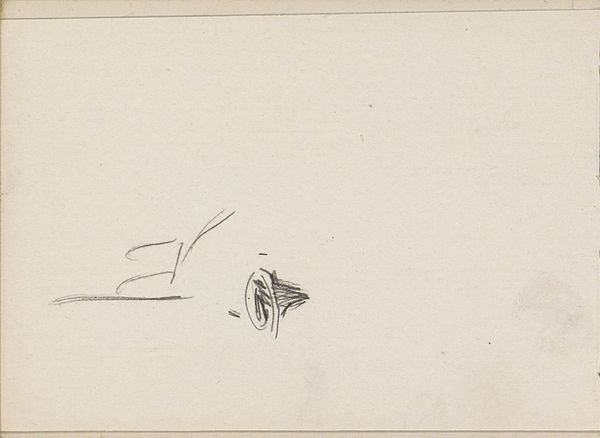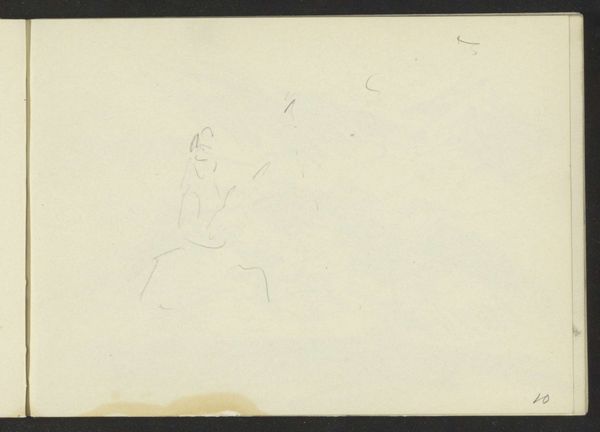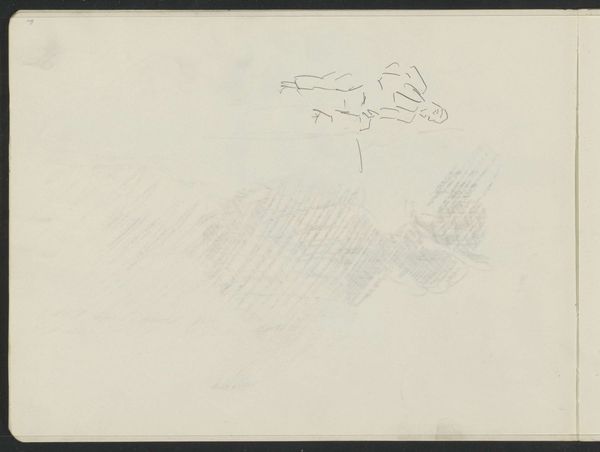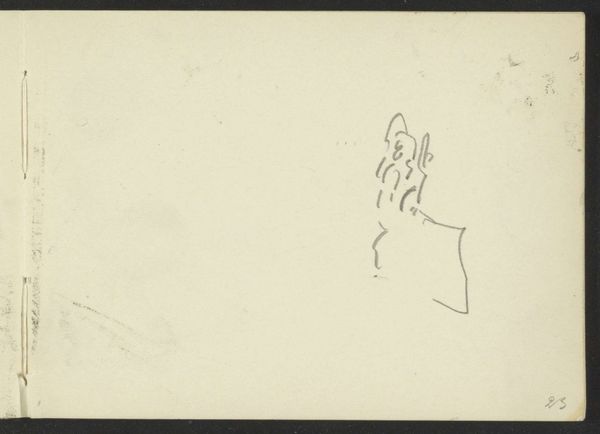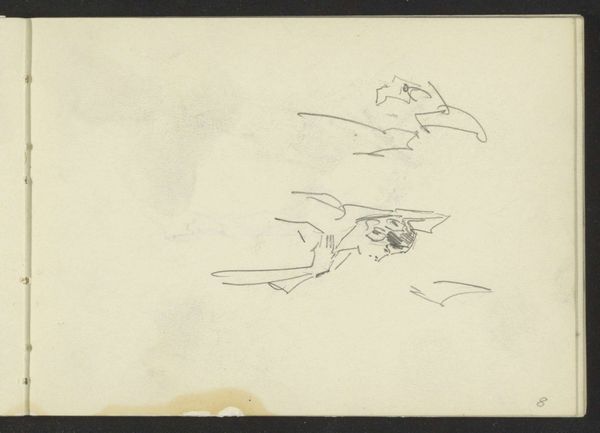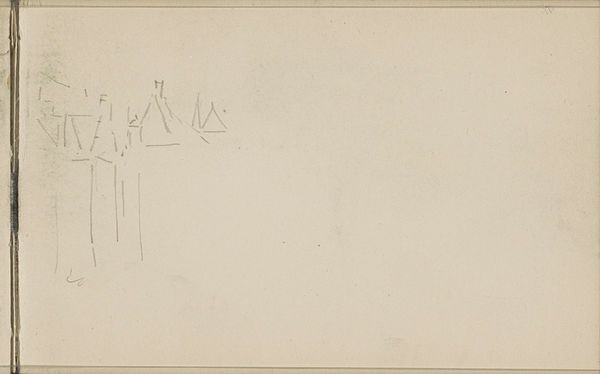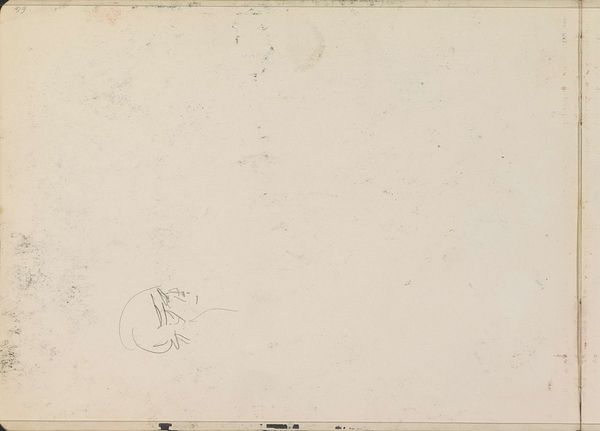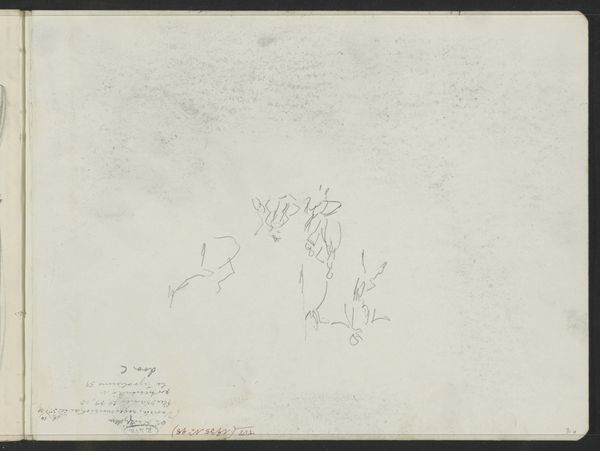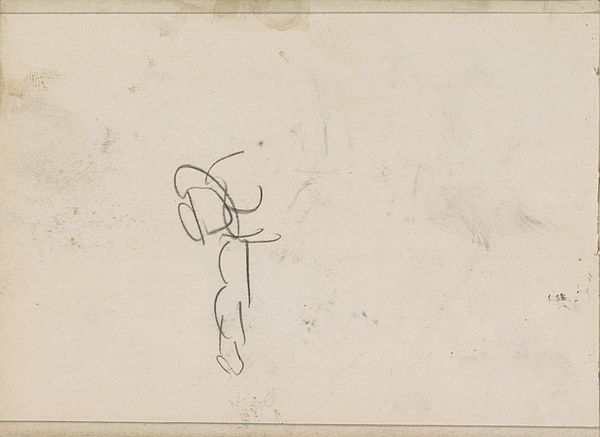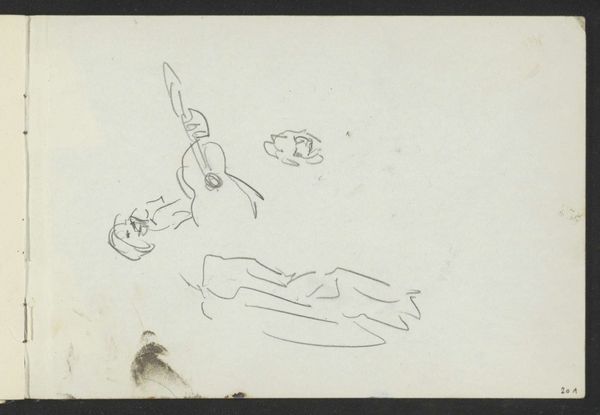
Copyright: Rijks Museum: Open Domain
Curator: Here we have a quick pencil sketch titled "Twee figuren," or "Two Figures," by George Hendrik Breitner, created sometime between 1886 and 1903. It’s currently held at the Rijksmuseum. Editor: My immediate reaction is… sparse. Stark even. The figures seem almost swallowed by the negative space of the page. Curator: Indeed, Breitner’s sketch embodies an almost brutal simplicity. Notice how the few lines describing the figures suggest the transient nature of urban life—the fleeting encounters he so often depicted. What do you see when you consider the raw materials themselves? Editor: Well, you have a fairly common medium for preliminary sketches – pencil on what appears to be simple paper. But, consider how Breitner deliberately *chose* this, eschewing more 'finished' techniques. The roughness emphasizes process over perfection, foregrounding the everyday labor inherent in observation. It strips away any artifice, right? Curator: Absolutely. And it invites us to contemplate what's *not* there. This negative space surrounding them—the absence of detail—amplifies the isolation of the figures. The lack of contextual grounding can heighten the sense of alienation often felt in urban environments. It’s a universal human experience reflected through carefully chosen visual strategies. Editor: Strategies borne of economy too, I’d argue. These aren’t grand oil paintings demanding lavish studios. This immediacy speaks to portability. How could he easily carry and use it, to be almost surreptitious in the work and not be restricted to high class galleries or formal situations? It reflects both freedom and constraint. Curator: Fascinating point! So this artistic economy of means might mirror the social or economic conditions he was trying to portray? A life rapidly captured in lines because life itself moved too quickly to capture more, but the figures are still very strong because that capture means they are always on the move... Editor: Exactly! It forces the question, what tools do artists employ under particular social pressures and constraints to give themselves visibility? It's a radical form of documentary making in a materialist sense. Curator: Looking again, I see that it isn't quite bleak or sparse now but pregnant with the promise of more. Editor: Yes. What could become of figures like these! It seems he had to carry the sketch material with him!
Comments
No comments
Be the first to comment and join the conversation on the ultimate creative platform.

